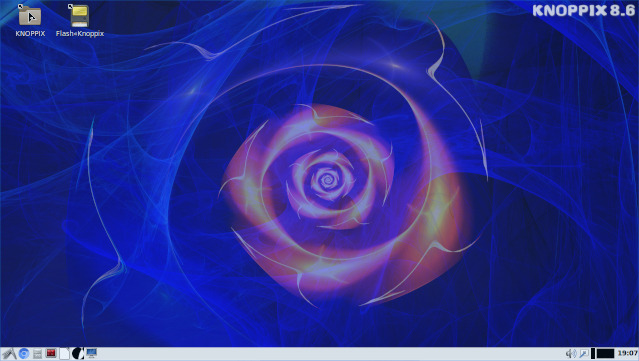KNOPPIX 8.6.0 Public Release


Version 8.6 basiert auf → Debian/stable (buster), mit einzelnen Paketen aus Debian/testing und unstable (sid) (v.a. Grafiktreiber und aktuelle Productivity-Software) und verwendet → Linux Kernel 5.2.5 sowie Xorg 7.7 (core 1.20.4) zur Unterstützung aktueller Computer-Hardware.
-

- Login or register to post comments
 Printer-friendly version
Printer-friendly version- 7388 reads
 PDF version
PDF version
More in Tux Machines
- Highlights
- Front Page
- Latest Headlines
- Archive
- Recent comments
- All-Time Popular Stories
- Hot Topics
- New Members
digiKam 7.7.0 is released
After three months of active maintenance and another bug triage, the digiKam team is proud to present version 7.7.0 of its open source digital photo manager. See below the list of most important features coming with this release.
|
Dilution and Misuse of the "Linux" Brand
|
Samsung, Red Hat to Work on Linux Drivers for Future Tech
The metaverse is expected to uproot system design as we know it, and Samsung is one of many hardware vendors re-imagining data center infrastructure in preparation for a parallel 3D world.
Samsung is working on new memory technologies that provide faster bandwidth inside hardware for data to travel between CPUs, storage and other computing resources. The company also announced it was partnering with Red Hat to ensure these technologies have Linux compatibility.
|
today's howtos
|









.svg_.png)
 Content (where original) is available under CC-BY-SA, copyrighted by original author/s.
Content (where original) is available under CC-BY-SA, copyrighted by original author/s.

KNOPPIX Released Coverage in English
KNOPPIX 8.6.0 Public Release
Knoppix 8.6 Released - This Original Linux Live Distro Now Based On Debian Buster
Knoppix 8.6 out now based on Debian 10.0 Buster
Knoppix 8.6 out now based on Debian 10.0 Buster
KNOPPIX Live GNU/Linux System Is Now Based on Debian GNU/Linux
KNOPPIX Live GNU/Linux System Is Now Based on Debian GNU/Linux 10 "Buster"
Knoppix 8.6 first wide public release to abandon systemd
Knoppix 8.6 first wide public release to abandon systemd
Knoppix 8.6 Released
Knoppix 8.6 Released
Knoppix 8.6.0 Released, Which is Based on Debian “Buster”
Knoppix 8.6.0 Released, Which is Based on Debian “Buster”